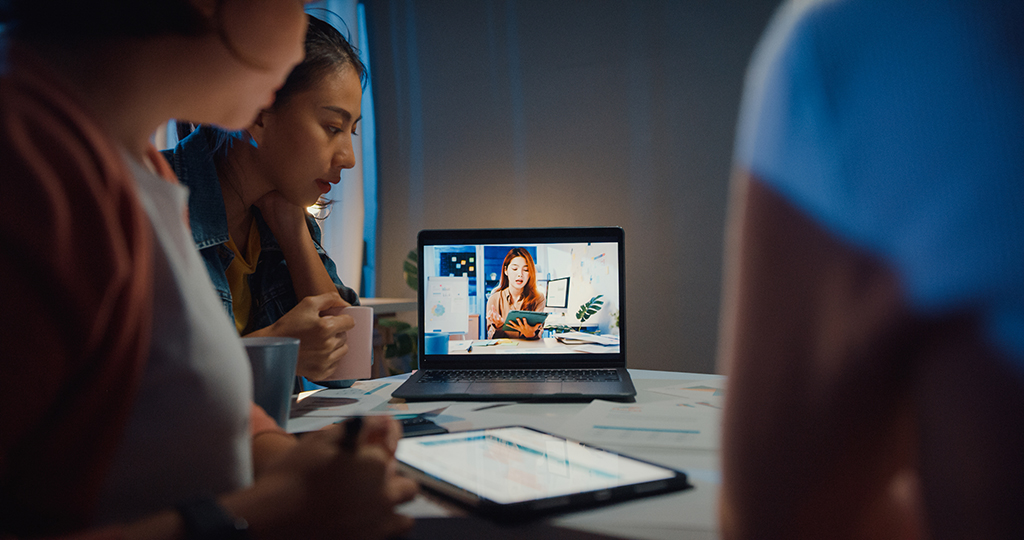
29 Oct How to Plan a Hybrid Event
Hybrid events are when in-person and virtual audiences come together. These events have redefined the way we connect. They offer the best of both worlds: the energy of a live gathering and the inclusivity of online participation. But while they open up exciting opportunities, they also demand a thoughtful balance of logistics, technology, and engagement strategies. Whether you’re planning a corporate meeting, training day, or large-scale conference, the key to success lies in designing an experience that works seamlessly for everyone, wherever they are.
Define Your Goals and Understand Your Audience
Every successful hybrid event begins with clear objectives. What are you hoping to achieve? Brand awareness, education, networking, or engagement? The answer will influence everything from your choice of platform to how you structure your agenda.
It’s equally important to understand who your audience is and what each group needs. In-person attendees might value face-to-face networking and interactive sessions, while virtual participants will prioritise ease of access and digital engagement. Map out both attendee journeys from start to finish and look for ways to make them equally rewarding. Setting expectations early ensures that every aspect of your event serves a clear purpose.
Choose the Right Venue and Technology
The technical foundation of your event is critical. Look for a venue that can support strong internet connectivity, reliable audiovisual infrastructure, and flexible layouts to accommodate cameras, screens, and microphones. The setup should allow for clear visuals and crisp sound. Nothing derails a hybrid event faster than technical hiccups.
Equally, your virtual platform needs to be user-friendly and dependable. Consider platforms that support live streaming, breakout rooms, and audience interaction tools such as polls and Q&As. It’s worth investing in a dedicated AV technician or production team who can monitor sound levels, manage transitions, and troubleshoot issues in real time. When the physical and virtual sides of your event operate in harmony, your audience will notice and appreciate the professionalism.

Having AV technicians on hand ensures your hybrid event runs smoothly, with expert management of sound, visuals, and live-streaming to prevent technical disruptions. Photo by kris_zarzh.
Design an Experience That Engages Both Audiences
Engagement is where many hybrid events succeed or falter. The goal is to make every participant feel equally involved, regardless of how they’re attending. This starts with intentional programming. Incorporate moments where both audiences can interact, such as live polls, quizzes, or hybrid networking sessions.
Encourage speakers to address both audiences directly, making eye contact with cameras as well as the room. For workshops or panels, consider having a moderator dedicated to managing virtual questions and another focusing on in-person interactions. Even small touches, like displaying live chat feeds on a screen or encouraging social media activity, can help bridge the physical divide.
Remember that attention spans differ between online and in-person participants. Build in short breaks and keep sessions concise and dynamic to maintain energy across both formats.
Perfect the Production
Depending on the size of your hybrid event, it can be part stage show, part broadcast. You might need to schedule thorough rehearsals. Think of everyone involved from speakers and moderators to technical staff and facilitators. Use these sessions to test audio levels, lighting, camera placement, and slide transitions.
Assign clear roles to your production team so every aspect runs smoothly. Someone should be monitoring the live chat, another should manage visual content, and a technician should oversee sound and streaming quality. When it comes to visuals, consider multiple camera angles to capture both the speaker and audience reactions, giving online attendees a more immersive experience.
Strong production values don’t just make your event look good, they reinforce credibility and ensure that participants stay engaged from start to finish.

Preparing your team beforehand is essential to ensure everyone understands their roles, responsibilities, and event flow. This minimises confusion, improves communication, and allows the event to run seamlessly from start to finish. Photo by renatahamuda.
Balance Comfort and Connection
For in-person attendees, the physical environment matters. Comfortable seating, good lighting, and well-timed breaks make a significant difference. Provide refreshments or catering where possible and design the space to encourage informal networking and conversation.
For virtual participants, comfort comes in the form of accessibility and interaction. Make sure joining instructions are clear and that technical support is easily available before and during the event. You could also add thoughtful touches to make remote guests feel included, such as:
- digital event packs,
- downloadable materials,
- scheduled online networking sessions.
Evaluate, Learn, and Follow Up
Once your event concludes, take the time to gather insights. Send surveys to both in-person and virtual attendees to understand what worked well and what could be improved. Analyse engagement metrics such as session attendance, chat participation, and social media activity to see which elements resonated most.
Follow up with thank-you messages, post-event recordings, or highlight reels to extend the life of your event. Not only does this help build stronger relationships with your audience, but it also provides valuable material for marketing and improvement next time. The best hybrid events are those that continuously evolve with feedback and new technology.

Gathering insights after the event helps you understand what worked well and what didn’t, allowing you to refine strategies, enhance attendee experiences, and continuously improve the success of future events. Photo by coolhand1180.
Planning a hybrid event requires more than just streaming a live session, it’s about designing a unified experience that connects people across locations and devices. When executed well, hybrid events expand reach, increase engagement, and deliver lasting impact.
With careful preparation, strong technical support, and a focus on both audiences, you can create an event that feels seamless, inclusive, and memorable; no matter where your attendees are tuning in from.
Have you also read these articles?
Planning Networking Events That Spark Real Connections
The Ultimate Guide to Choosing the Right Venue for Your Event


